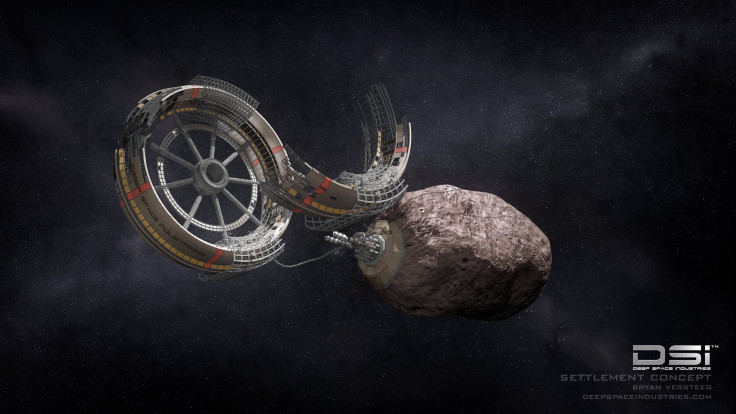Deep Space Industries, New Asteroid Mining Company, Announces Launch Plans For 2015

At first blush, it's an ordinary piece of business news: A new mining company wants to send prospectors out to the frontier. But in this case, the prospectors are spacecraft, and the frontier is space.
Deep Space Industries said Tuesday that it plans to start launching its FireFly spacecraft in 2015. The 55-pound crafts will hitch rides on rockets that launch communication satellites into orbit. The first wave of spacecraft will be taking one-way trips, but in 2016 DSI wants to start launching larger DragonFly craft that will take samples and come back two to four years later.
“My smartphone has more computing power than they had on the Apollo moon missions,” DSI Chairman Rick Tumlinson said in a statement Tuesday. “We can make amazing machines smaller, cheaper and faster than ever before. Imagine a production line of FireFlies, cocked and loaded and ready to fly out to examine any object that gets near the Earth.”
DSI is looking for materials to make fuel as well as metals to be used for building materials. Their first targets are near-Earth objects which, given proper timing, could be easier to reach than the moon, the company says. More than a thousand of these asteroids that cross Earth's orbit are more than a kilometer wide.
Prospecting spacecraft will try and gather data about the composition of near-Earth objects, like their composition, structure and how quickly they are spinning.
There are different kinds of asteroids, all with different uses. The company plans to harvest water from carbonaceous asteroids that can be used to support human astronauts in space or to make propellant for spacecraft and satellites. Metal from metallic asteroids can be harvested to make all kinds of parts and construction materials. Even after water or minerals are harvested from the asteroid, it still has its uses -- crushed rock could be used to create shields to protect human facilities in space or on other planets from radiation.
But once you've identified an asteroid, how do you mine it, when it might take more than a decade to return to Earth? DSI says the solution is to move asteroids to a more stable location near Earth, like an orbit around our moon. The company is quick to emphasize they will not move asteroids bigger than 30 meters (100 feet) wide within striking distance of our planet. Such asteroids would break up harmlessly in our atmosphere if they escaped, according to the company.
DSI is also working on a new kind of 3D printing device called the MicroGravity Foundry that will construct various mechanical parts out of asteroid material.
But DSI isn't the only player in the asteroid mining game -- Washington-based Planetary Resources, which unveiled its plans in 2012 and is advised by filmmaker James Cameron, just released a scale prototype of one of its orbiting spacecraft. The Arkyd-100 is an 11-kilogram (24-pound) spacecraft aimed at becoming the first private space telescope in orbit.
© Copyright IBTimes 2024. All rights reserved.











